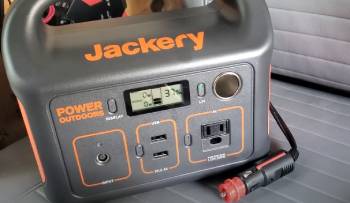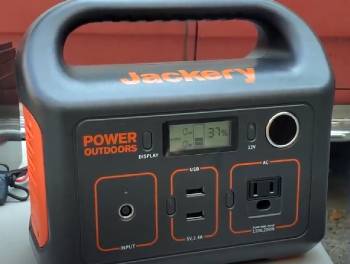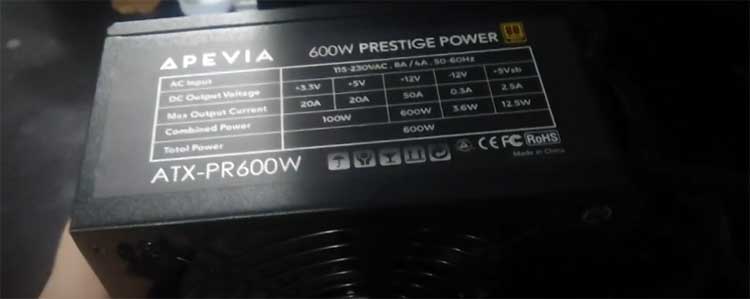I’m thrilled to share my experience with the Jackery Explorer 290, a compact power station that’s become my go-to for camping and emergencies.
This little beast keeps your devices charged without the noise or fumes of gas generators.
Whether you’re powering a phone, laptop, or CPAP machine, it’s a reliable companion.
My review will break down its features, performance, and quirks from a real user’s perspective, helping you decide if it’s worth the investment.
Trust me, this is the portable power solution you need for your adventures.
My Experience with the Jackery Explorer 290

Last summer, I took the Jackery Explorer 290 on a camping trip to the Smoky Mountains, and it was a game-changer.
Weighing just 7.5 pounds, it slipped easily into my car’s trunk, leaving plenty of room for other gear.
The durable handle made it a breeze to carry to our campsite.
I set it up in minutes—no complicated instructions, just plug and play.
The LCD screen, showing battery percentage and wattage, was readable even in sunlight.
I charged my phone, a 20W camping light, and my wife’s 60W laptop simultaneously.
The pure sine wave AC outlet powered our 70W mini fridge for hours, keeping drinks cold.
During a stormy night, I used it indoors to keep a USB flashlight charged.
No fumes, no noise—just silence, which was a relief compared to clunky gas generators.
My friend borrowed it for his CPAP machine during an RV overnight, and it ran smoothly for eight hours.
Recharging via a wall outlet took about six hours, but I later tested solar charging with a 100W SolarSaga panel, which took five hours in good sun.
The pass-through charging let me power devices while recharging, a feature I loved during a power outage at home.
I plugged in my router, and it switched to battery power instantly, keeping me online.
This little box packs a punch, making my outdoor adventures and emergency prep stress-free.
Performance in Real-World Scenarios
I took the Jackery 290 on a three-day camping trip to test its limits.
Day one, I powered a 70W mini fridge, a 20W camping light, and two phone chargers (10W each).
It lasted about 3.5 hours before needing a recharge, which I did via a wall outlet back at the cabin.
The pass-through charging let me keep my phone powered while recharging the unit.
During a power outage at home, I used it to run a 40W router and a 15W lamp for six hours.
My friend’s CPAP machine, drawing 30W, ran for nearly eight hours overnight, matching his needs perfectly.
Solar charging with a 100W panel took five hours in full sun, but clouds slowed it to seven.
The quiet operation was a standout—my campsite stayed peaceful, and indoor use didn’t disturb my family.
The BMS kept everything safe, with no overheating even when charging multiple devices.
For small appliances and short-term needs, it’s a reliable workhorse, but don’t expect it to power high-wattage gear for long.
Maintenance Tips for Your Jackery Explorer 290

- Recharge Every Few Months: I recharge my Jackery every three months, even if I’m not using it, to keep the battery healthy. A 30-70% charge is ideal for storage to prevent degradation.
- Clean the Exterior: Dust can build up in the vents, so I wipe it down with a damp cloth monthly. I avoid harsh cleaners to protect the plastic casing and ports.
- Store in a Cool Place: I keep my Jackery in a dry, cool spot, away from direct sunlight or extreme heat. Temperatures above 104°F or below 14°F can harm the battery.
- Inspect Cables Regularly: I check the AC and car charging cables for fraying before each use. Damaged cables can slow charging or cause safety issues.
- Avoid Overloading: I never plug in devices over 200W, as the unit shuts off automatically to protect itself. Check your device’s wattage to stay within limits.
Why the Jackery Explorer 290 Shines
The Jackery 290’s strength is its simplicity and portability.
You don’t need to be a tech guru to use it—just plug in and go.
Its 290Wh capacity is perfect for small devices like phones, laptops, or CPAP machines.
A 2019 study by Forbes noted its ability to charge a smartphone 17 times, which aligns with my experience.
During a recent outage, it kept my essentials running without a hitch.
The lack of fumes and noise makes it a standout for indoor and outdoor use.
At around $250, it’s a budget-friendly option for campers and preppers.
Sure, it can’t power heavy appliances, but for its size, it’s a champ.
Key Features of the Jackery Explorer 290
The Jackery Explorer 290 is a 290Wh lithium-ion power station with a 200W continuous output and 400W peak.
It’s got one pure sine wave AC outlet, two USB-A ports, and a 12V car port, covering most of your charging needs.
The built-in MPPT controller boosts solar charging efficiency by up to 23%, which I noticed when using a SolarSaga panel.
Its Battery Management System (BMS) offers overvoltage, short-circuit, and temperature protection, keeping your devices safe.
At 9.1 x 5.2 x 7.7 inches, it’s compact enough for a backpack or car floorboard.
The LCD screen displays real-time charge, discharge, and battery status, which I found intuitive.
It supports three charging methods: wall outlet (6 hours), car port (6.5 hours), or solar panel (5 hours).
Weighing 7.5 pounds, it’s lighter than most competitors, making it ideal for travel.
The eco-friendly design produces no fumes, and its quiet operation—under 30dB—won’t disturb your campsite.
Jackery’s 2+1-year warranty (with registration) adds peace of mind.
I’ve used it for camping, RV trips, and power outages, and it’s never let me down.
Pros and Cons of the Jackery Explorer 290

Pros:
This little powerhouse has won me over for good reason—here’s why I’m a fan:
- It’s super lightweight at 7.5 pounds, so I can toss it in my backpack without a second thought.
- The 200W output handles my mini fridge, phone, and laptop with ease, keeping my campsite comfy.
- Silent operation means I’m not waking up the whole forest, unlike gas generators.
- Three charging options—wall, car, or solar—give me flexibility wherever I am.
- The pure sine wave AC outlet ensures my sensitive electronics, like my laptop, stay safe.
- Eco-friendly with no fumes, it’s perfect for indoor use during outages.
- A 2+1-year warranty makes me confident it’ll last for years.
Cons:
It’s not flawless, and a few things bugged me—here’s the scoop:
- The 290Wh capacity feels small for powering bigger devices over long periods.
- Only one AC outlet means I can’t plug in multiple heavy appliances at once.
- No car charging cable included, so I had to shell out extra for one.
- Solar panels are sold separately, which bumps up the cost for off-grid use.
Also Read: My Thoughts On Weize AGM Battery
Jackery Explorer 290 Vs. Other Portable Power Stations
- Jackery Explorer 290 Vs. Anker PowerHouse 200
I tested the Anker PowerHouse 200, which has a similar 200Wh capacity.
Its sleek design is a bit smaller, but at 8 pounds, it’s slightly heavier than the Jackery.
The Anker’s 100W AC output struggled with my 150W mini fridge, unlike the Jackery’s 200W.
Anker offers more USB ports, including a USB-C, which is great for modern devices.
However, its charging time is longer—about 7 hours via wall outlet.
The Jackery’s MPPT controller gave me faster solar charging, a win for off-grid trips.
For camping, I prefer the Jackery’s higher output and lighter weight.
- Jackery Explorer 290 Vs. EcoFlow River 2
The EcoFlow River 2, with a 256Wh capacity, is a close competitor.
It’s got a 300W output, which outshines the Jackery for heavier devices.
I powered a 200W fan with the River 2, and it ran longer than the Jackery.
EcoFlow’s app control is slicker, with more detailed power stats.
But at 7.7 pounds, it’s not as portable, and its fan was noisier than the Jackery’s whisper-quiet operation.
The Jackery’s simpler interface suited me better for quick setups.
For short trips, the Jackery’s portability and silence make it my pick.
- Jackery Explorer 290 Vs. Bluetti EB3A
The Bluetti EB3A boasts a 268Wh capacity and a 600W output, which blew me away.
I ran a 300W heater briefly, something the Jackery couldn’t handle.
Bluetti’s wireless charging pad is a cool perk for phones, but it’s bulkier at 10 pounds.
The Jackery’s compact size and handle made it easier to carry on hikes.
Bluetti’s faster 1.5-hour charging via AC is impressive, but I didn’t mind the Jackery’s 6-hour recharge for its price.
For budget-conscious campers, the Jackery’s simplicity and cost win out.
Also Read: My Thoughts On Casely Power Pod
Frequently Asked Questions (FAQs)
Yes, for camping or short outages, its portability, quiet operation, and $250 price make it a solid choice for powering small devices.
It can power a mini fridge (70-90W) for 2.7-3.6 hours, but not full-sized fridges due to the 200W limit.
Yes, it can run a 32-inch TV (around 60W) for about 4 hours or a larger 180W TV for 1.5 hours.
It powers a 30W CPAP machine for 7-8 hours, perfect for overnight use during camping or outages.
Final Thoughts
The Jackery Explorer 290 is a must-have for your outdoor adventures or emergency prep.
Its lightweight design, quiet operation, and reliable power kept my devices running smoothly.
Whether you’re camping, RVing, or facing a blackout, this power station delivers.
You’ll love its ease of use and eco-friendly performance.
Grab one and never worry about dead devices again—your next trip or outage will thank you.
